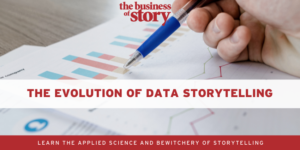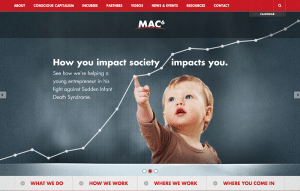 On Tuesday, I was working with a dozen socialpreneurs at Seed Spot, a Phoenix-based incubator for cause-driven organizations.
On Tuesday, I was working with a dozen socialpreneurs at Seed Spot, a Phoenix-based incubator for cause-driven organizations.
I took the group through these 10 quick questions to help them get their brand storytelling straight. The first two questions always throw them.
How about you?
- What do you do better than anyone else?
- Who cares?
Squash the competition
One of the participants, James Dobson of Arizona Squash, told me that his organization helps disadvantaged youth prepare for college through engaging after-school programs.
I said sorry, James, lots of organizations do that. “What makes you special?
James’ differentiator is that he uses the sport of squash as his vehicle for fundraising and teaching kids how to play it and the life lessons that come with that instruction.
“Now we’re getting somewhere,” I said.

I asked him why he didn’t mention squash in his answer to the first question: what do you better than anyone else?
He said, “Because we raise money for after-school programs.”
“That’s a commodity, I said. But the fact that you use squash as your vehicle: Now you’ve got a differentiator in the commoditized world of fundraising.”
That One Thing
The reason we all miss mentioning that one thing we do is we’re often locked into a commodity mindset: Trying to be all things to all people.
That doesn’t work. Because we live in a time of abundance. Our audiences have myriad choices of what brand stories to buy into. We are all commodities unless we hyper focus our positioning statement: the foundation for our brand story.
James realized that Arizona Squash is the area’s #1 resource for to enrich the lives of underserved Phoenix area youth and provide them with the academic support to graduate college career ready and debt free through the game of squash.
No one else in Arizona does this. Only James.
Did you see how your brain snaps to attention about his position in the market by simply adding the descriptor of squash? We categorize Jame’s cause in a higher order because it’s singular. Differentiated. Meaningful. And he owns it.
It is a crystal clear brand position in a noisy world.
Who cares?
Squash players care!
Again, it took some digging with James. When I asked him who his audience was, he said, “Everyone. We’re trying to raise funds.”
So I asked again, “Who’s your #1 audience? And it can’t be everyone!”
After some thought he said, “Squash players.”
They are a passionate tribe, often affluent, and they love to find ways to promote their sport. James provides that outlet through his after-school programs and college scholarships. His squash audience not only donates money, but they volunteer in his programs.
Do you think his story would resonate with them if he was just another fundraiser for after-school programs?
Nope.
It took us 10 minutes to narrow James’ focus to what he does better than anyone else and identify who truly cares: His #1 audience.
Now, James has a razor-sharp point to his brand story, and he will standout in the crowd of all those kind souls raising funds for after-school programs for disadvantaged youth to make college more accessible.
He has squash.
What do you have? What are you better at than anyone else? What’s your razor-sharp point?
And who cares?
Here is a simple way to find your #1 position in the market:
- What industry are you in?
- What category do you service?
- What specialty do you provide?
- What do you do better than anyone else in that industry/category/specialty?
James’ industry is nonprofit.
His category is education.
His specialty is providing after school engagement programs and college scholarships for disadvantaged youth.
His #1 specialty – what he does better than anyone else – is that he is Arizona’s #1 resource for after school programs and college scholarships for disadvantage youth through the camaraderie of squash.
Now that’s not his official position statement. It’s what I gleaned from our 10-minute conversation using brand storytelling as our guide. But it’s a pretty good start.
Again, feel how your mind snaps to attention by defining his core differentiator? It raises James’ offering above his competition in the hearts and minds of his audiences.
Declaring your precise position is your step out of the primordial muck of commoditization. It creates meaning around your brand and elevates you in importance to your audiences.
Go through the process and share what it is you do better than anyone else in the comments below. Or join us on our private Business of Story Raconteurs Facebook Group, and see what feedback you get from your fellow brand storytellers.
Story on!












at 1:46 am
[…] not a good idea to borrow money from a friend as it can have a negative impact on the relationship. a replacement Do you agree with this position or not, and why or why not? Suppose that you are getting ready for […]
at 1:53 am
[…] and funded by the university. They actively participate in on-campus as well as nationally you can find out more focused activism. Every year, the organization sends a delegation to the March for Life to show […]